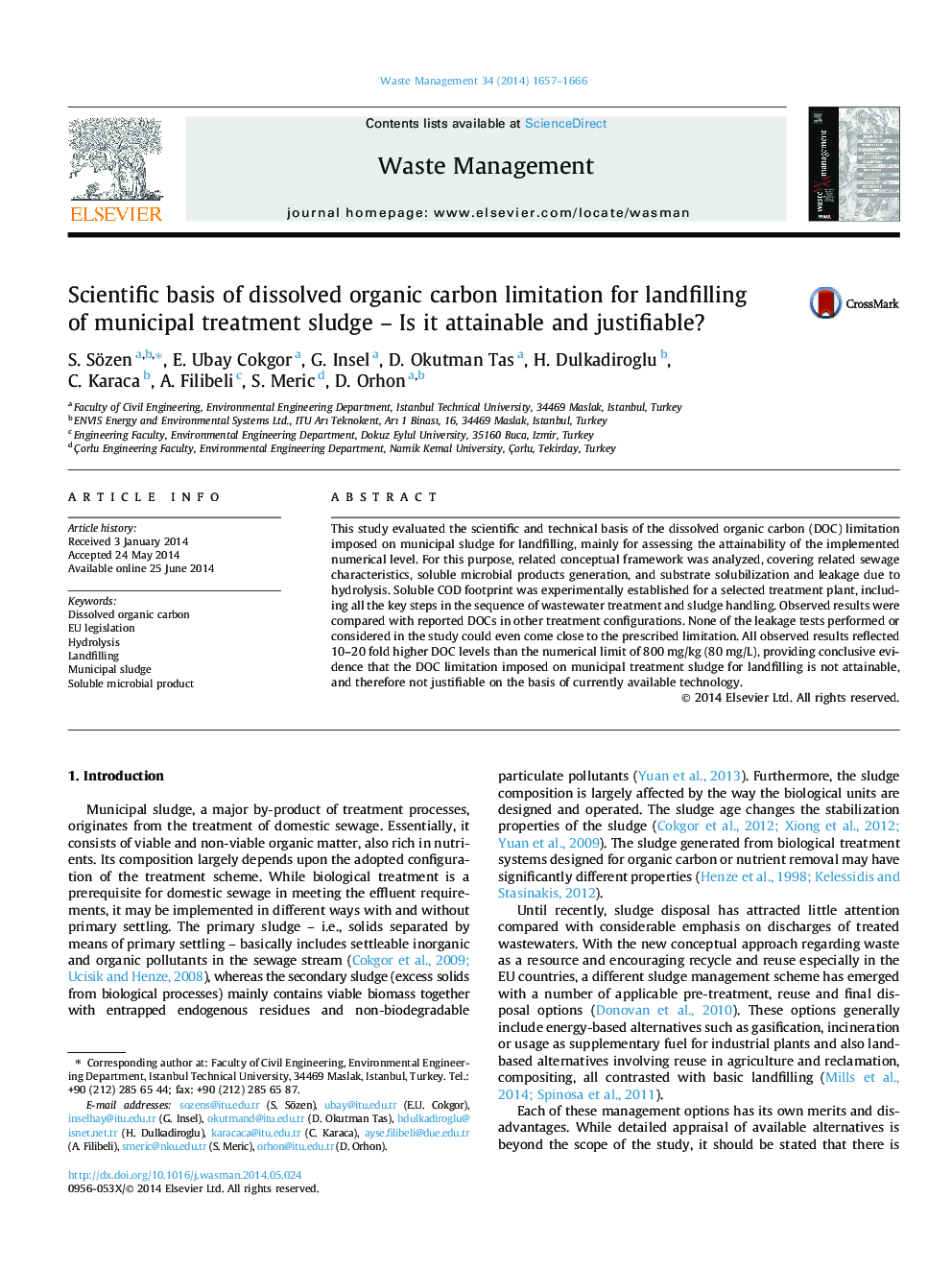| Article ID | Journal | Published Year | Pages | File Type |
|---|---|---|---|---|
| 4471471 | Waste Management | 2014 | 10 Pages |
•80 mg/L DOC limit imposed by EU on treatment sludge for landfills is not attainable.•The best economically available technology is inadequate to secure the limit.•All observed DOC results reflected 10–20 fold higher levels than the limit.•The DOC limit is not achieved by none of the leakage tests performed.
This study evaluated the scientific and technical basis of the dissolved organic carbon (DOC) limitation imposed on municipal sludge for landfilling, mainly for assessing the attainability of the implemented numerical level. For this purpose, related conceptual framework was analyzed, covering related sewage characteristics, soluble microbial products generation, and substrate solubilization and leakage due to hydrolysis. Soluble COD footprint was experimentally established for a selected treatment plant, including all the key steps in the sequence of wastewater treatment and sludge handling. Observed results were compared with reported DOCs in other treatment configurations. None of the leakage tests performed or considered in the study could even come close to the prescribed limitation. All observed results reflected 10–20 fold higher DOC levels than the numerical limit of 800 mg/kg (80 mg/L), providing conclusive evidence that the DOC limitation imposed on municipal treatment sludge for landfilling is not attainable, and therefore not justifiable on the basis of currently available technology.
